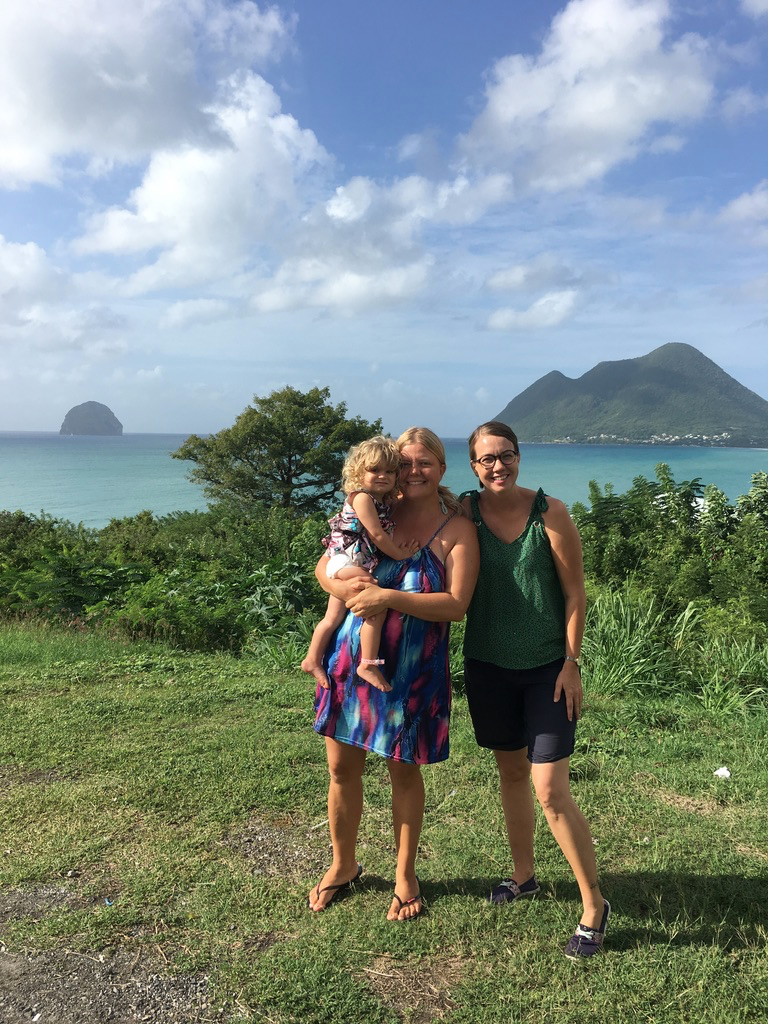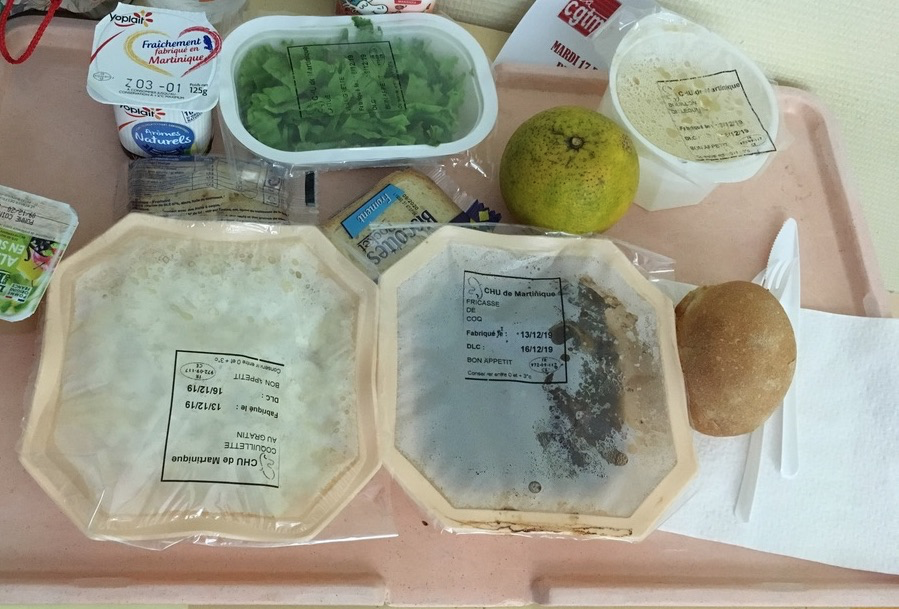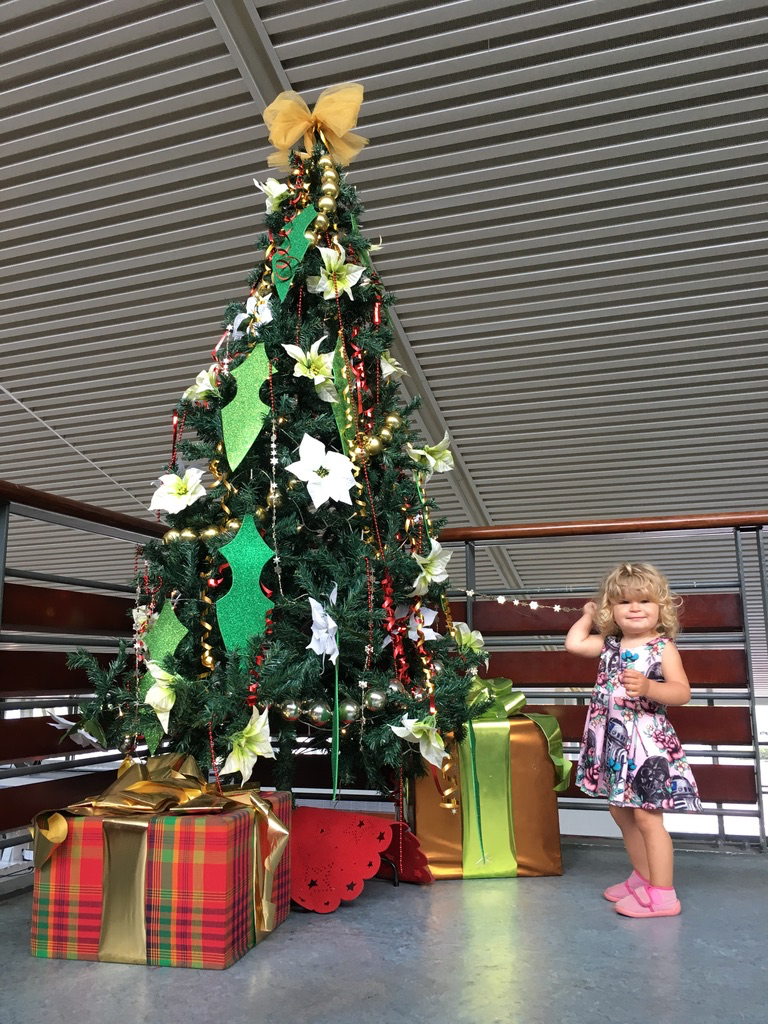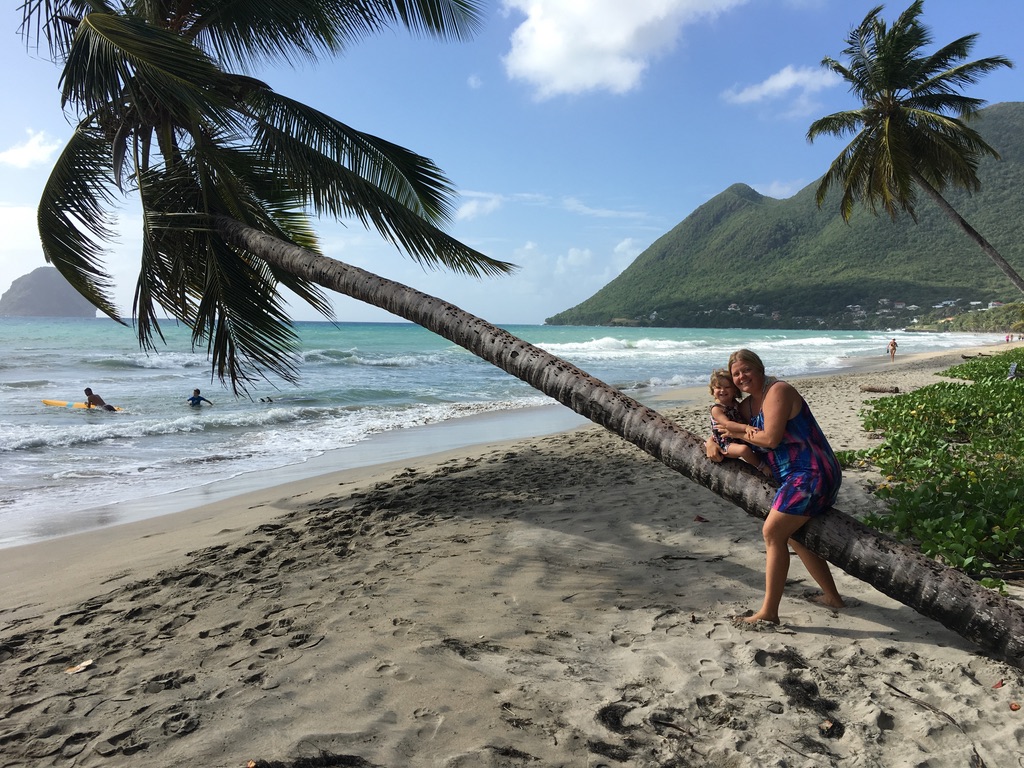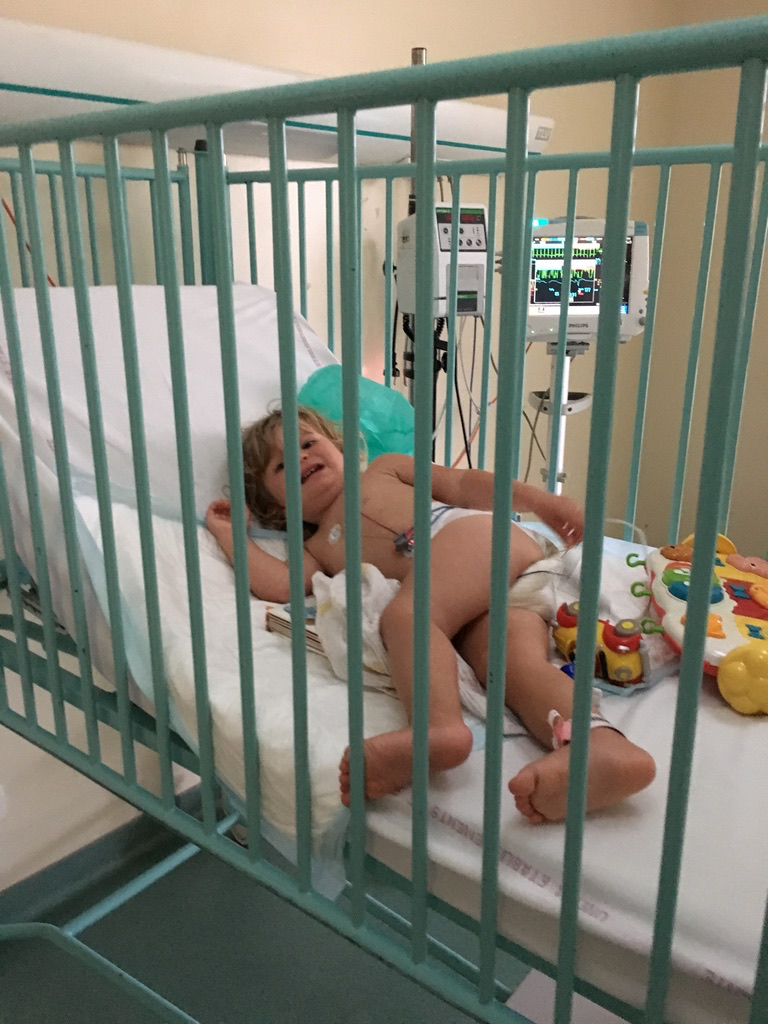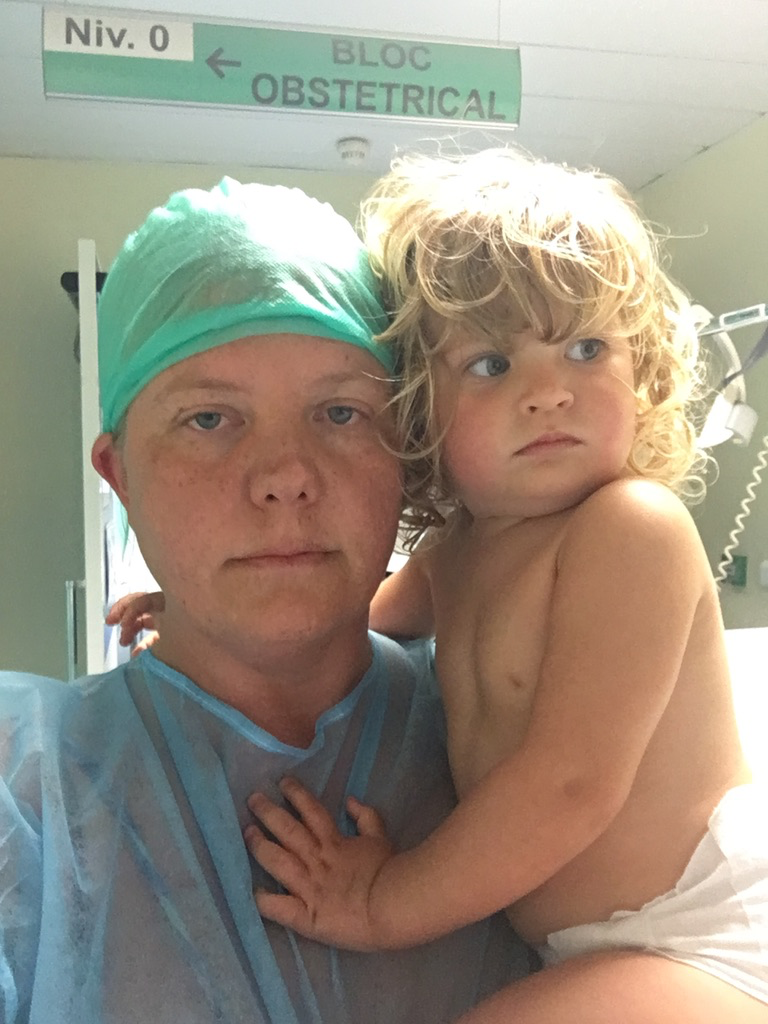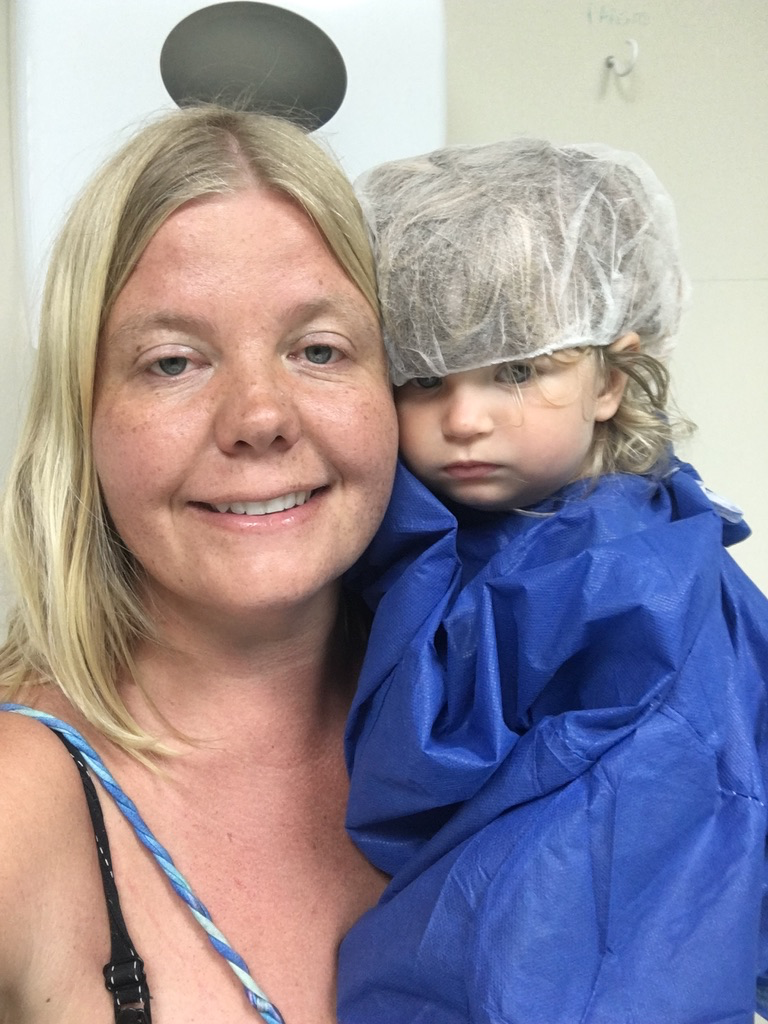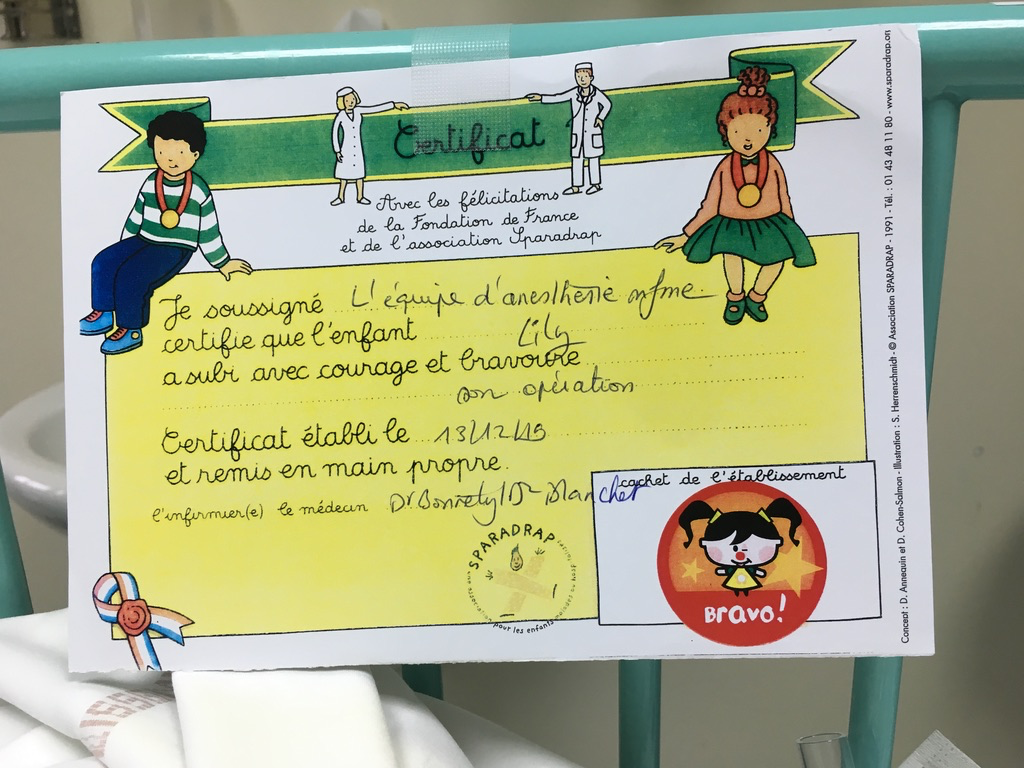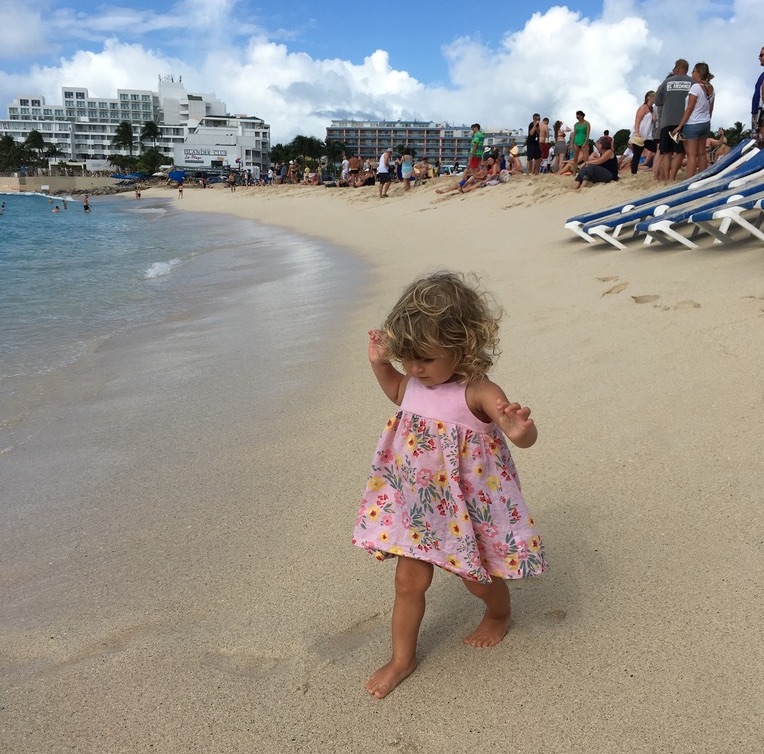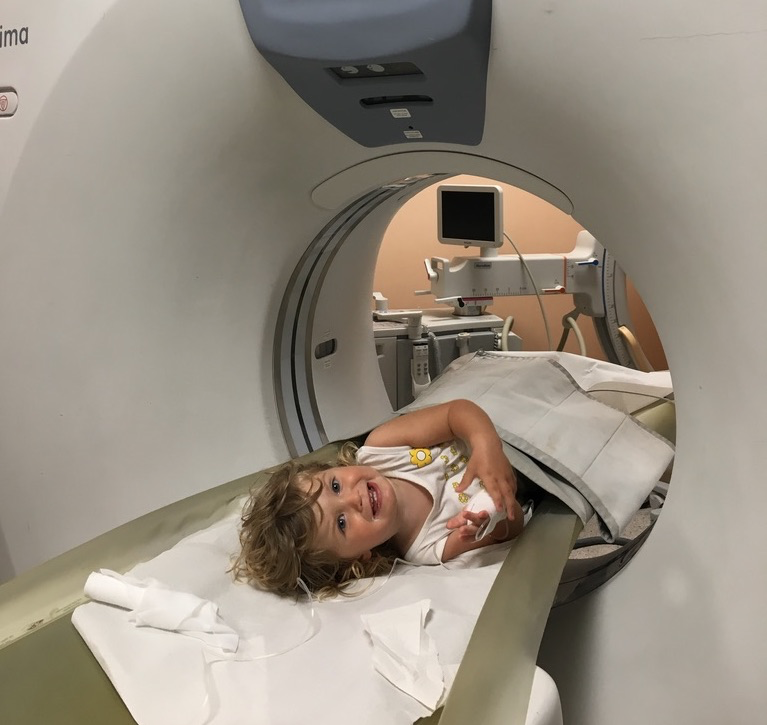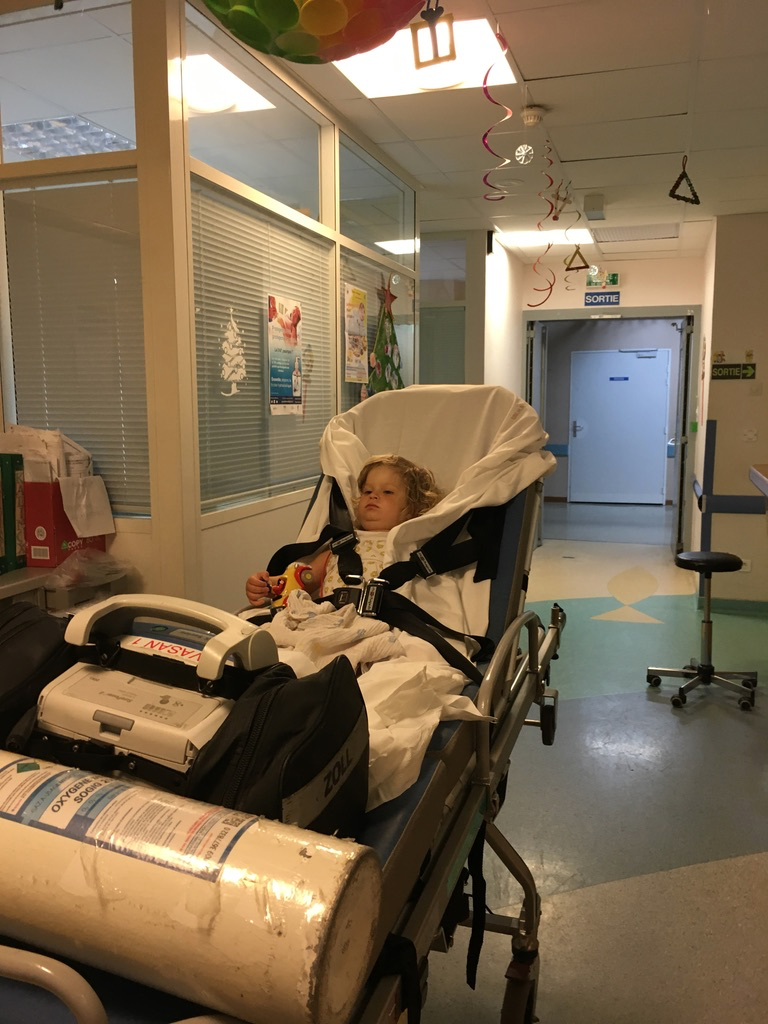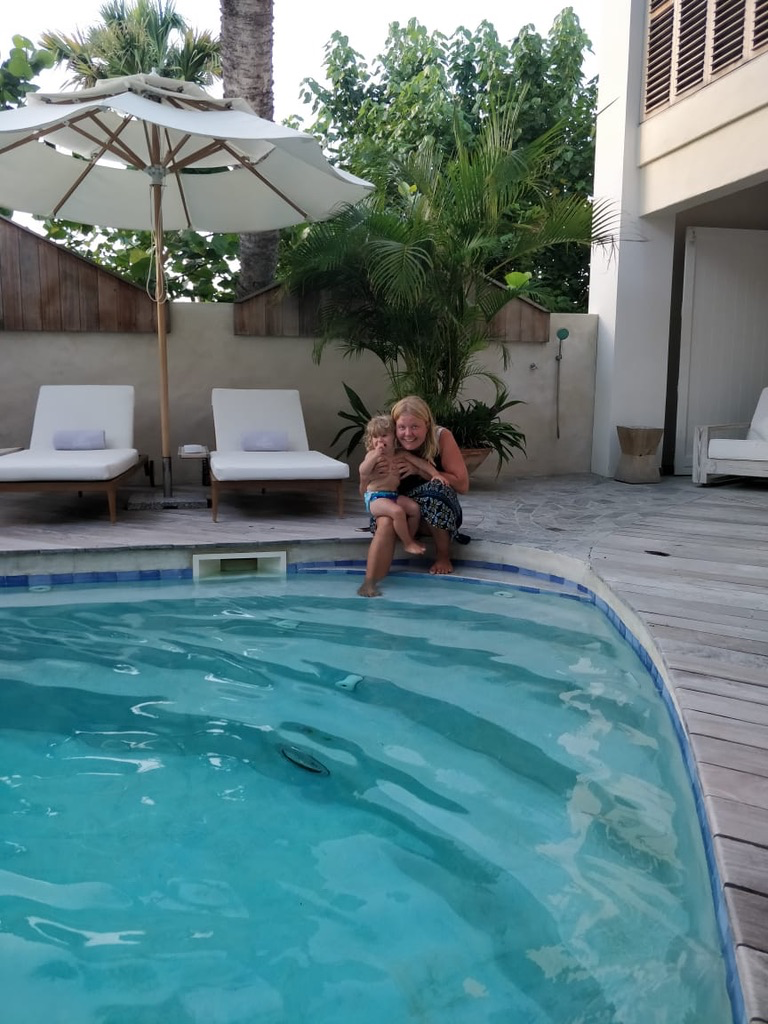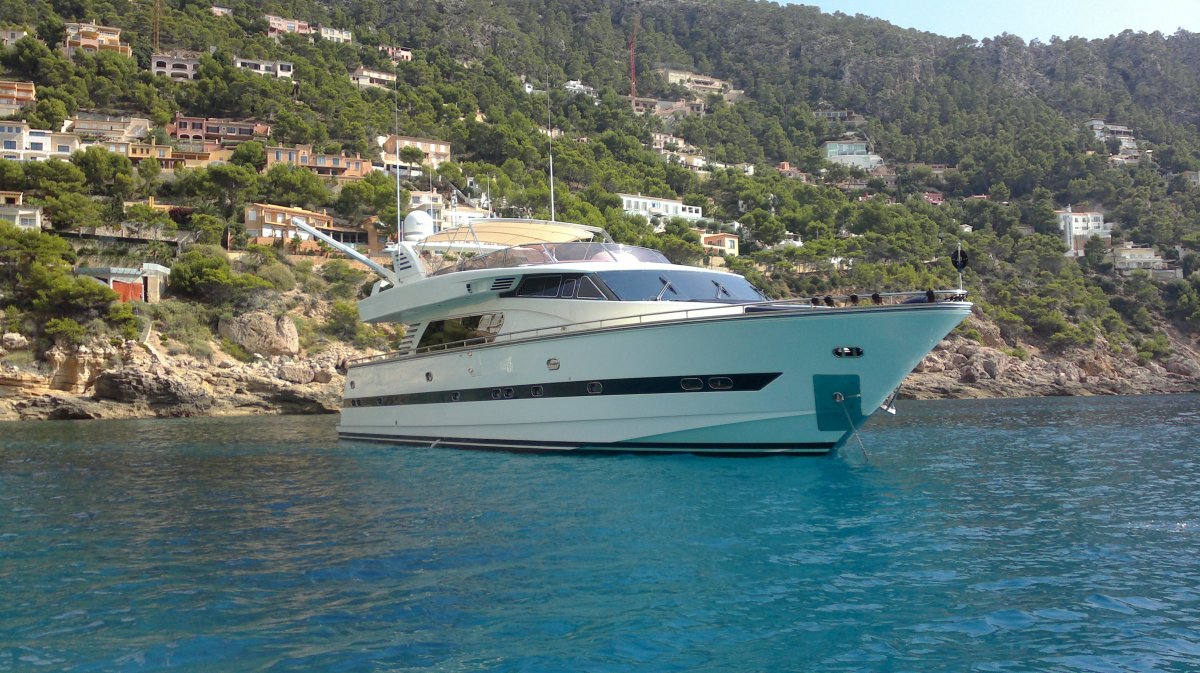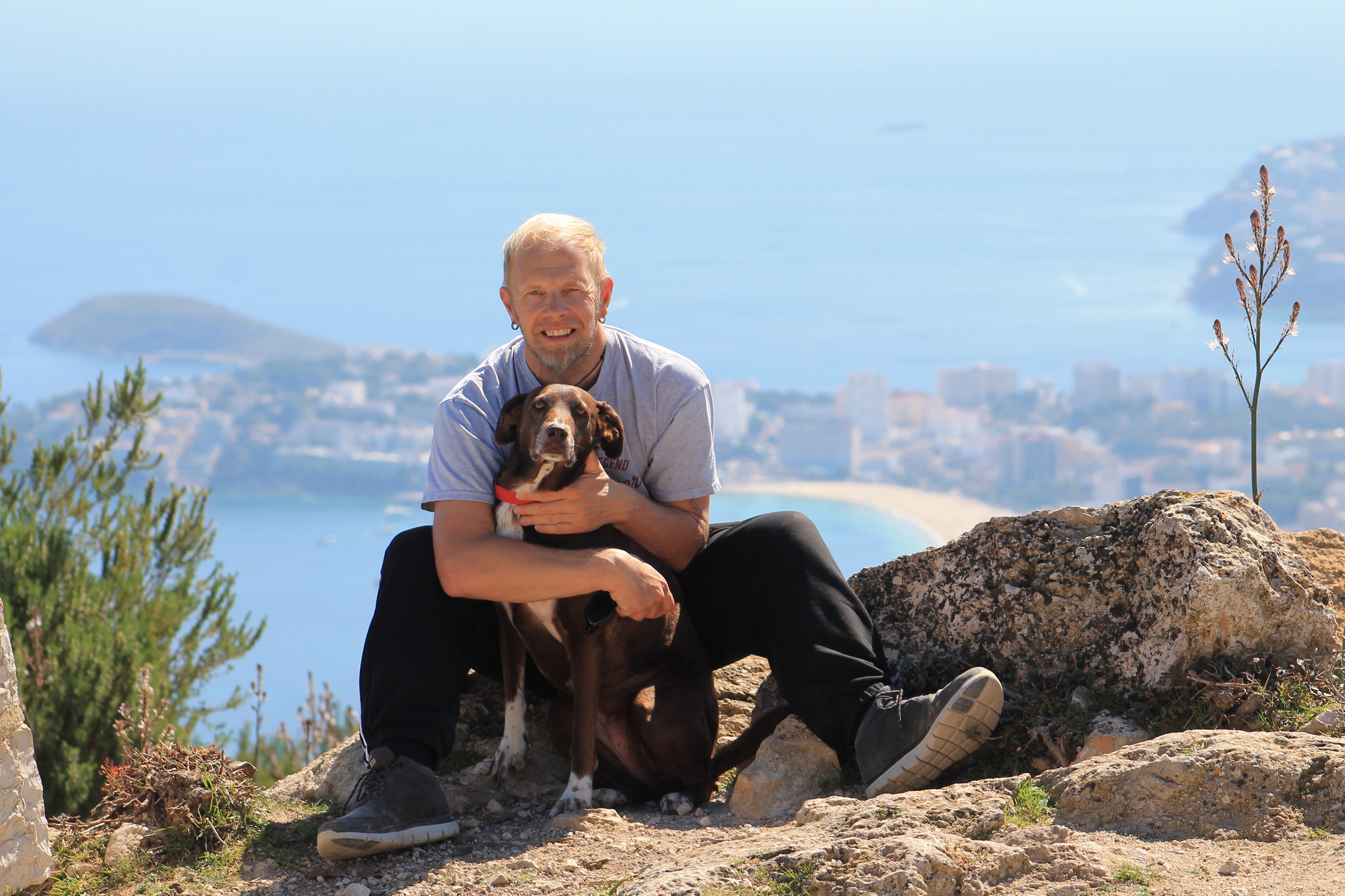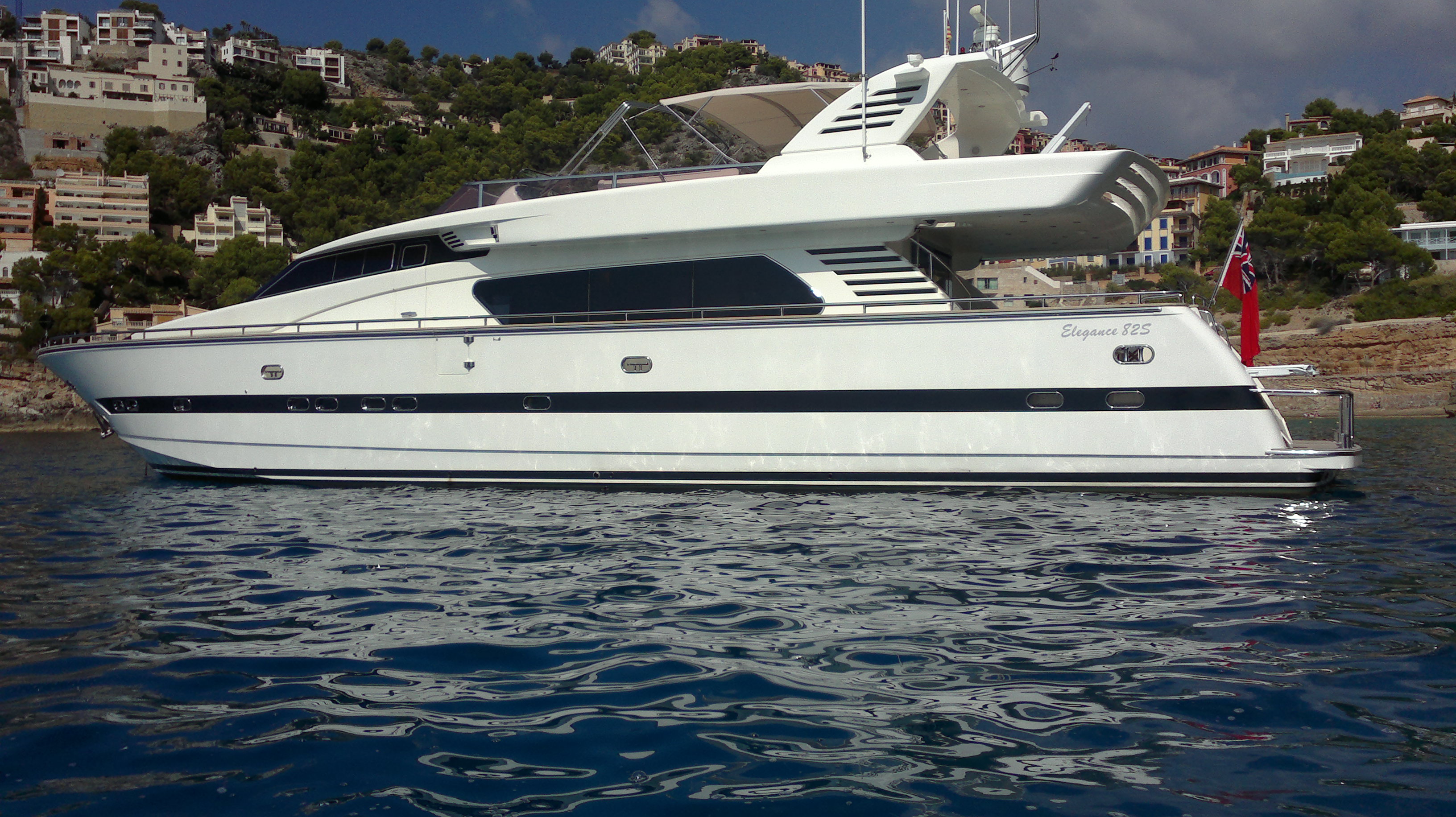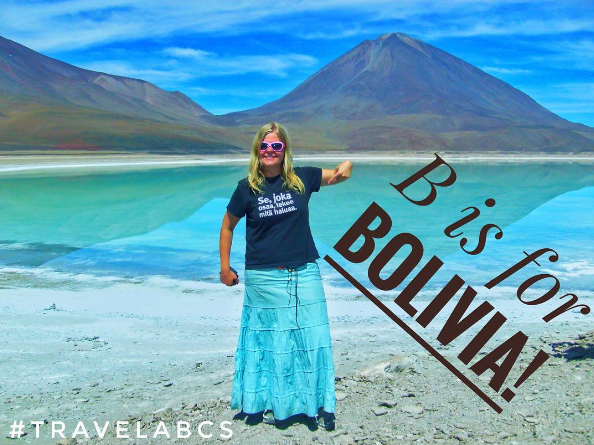Aurinko paistaa, vieressä hohtaa turkoosi Karibianmeri ja edessä siintää taas uusi eksoottinen satama: työnteko loistoristeilijällä on välillä makeaa kuin sokerinen cocktail. Monesti se taas on pelkkää arkistaa raadantaa. Nämä maailman meriä kyntävät jopa 4 000 ihmisen jättialukset kymmenine eri työntekijäkansallisuuksineen ovat kuin omia kelluvia kaupunkejaan. Jututin kansainvälistä laivaelämää kokeneita suomalaisia heidän laivakokemuksistaan.
Vantaalaisella Veeralla oli lapsuudestaan lähtien unelma: lähteä jonain päivänä töihin loistoristeilijälle, tutustumaan maapallomme kaukaisiin kolkkiin.
Vuonna 2010 hän sitten vihdoin pääsi toteuttamaan haaveensa. Veera Soppi pestattiin tuolloin Disney Cruise Line –yhtiön Disney Magic –aluksen kylpyläosastolle hierojaksi. Laivaan mahtuu matkustajia 2 700, ja henkilökuntaa 950.
Disney Magic tekee vuodenajasta riippuen 4-12 yön risteilyitä eri reiteillä ympäri maailmaa. Veeran aloittaessa työt alus oli Välimeren turneella.
– Barcelona oli kotisatama. Malta, Napoli, Palma de Mallorca, Villefranche, Tunisia ja Korsika olivat yleisimmät satamat, joissa kävimme, kertoo Veera. Euroopasta suosikiksi nousi Napoli.
– Hyvä ruoka, ihanat ihmiset ja uskomattoman kaunis kaupunki tekivät vaikutuksen. Lisäksi löysin lempisuklaakauppani, jossa kävin usein.
Veera viihtyi Disneyn palkkalistoilla tasan vuoden ajan, josta neljä kuukautta oli palkatonta lomaa. Disney Magicin lisäksi hän paiskoi kahden kuukauden ajan hommia samankokoisella sisaraluksella, Disney Wonder Cruiserilla.
Liikkuvan työpaikan myötä Veera pääsi ensimmäistä kertaa ylittämään Atlantin, joka oli hänen mukaansa huima kokemus.
– Kyseessä oli pisin aika mitä olin ollut merellä, ilman että käy maissa
ollenkaan, saati että edes näkisi maata. Taisi olla viisi päivää putkeen.
– Meren ylitys myös tarkoitti minulle, että pääsin ensimmäistä kertaa elämässäni Karibialle ja Yhdysvaltoihin. Käynti Hollywoodissa oli unohtumaton kokemus. Sinne pääsemisestä olin pienestä pitäen haaveillut.

Veera ja Disneyn alus Karibian St. Thomasin saarella
Los Angelesin lisäksi Pohjois-Amerikan länsirannikolta jäi mieleen Meksikon Cabo San Lucas. Karibian kohteista tutuiksi tulivat mm. Grand Cayman, Cozumel, St. Thomas, Barbados ja Martinique.
– Lisäksi Disney Cruise Linella on oma saari Bahamalla, Castaway Cay, johon ei pääse kuin heidän laivoillaan. Siellä tein rannalla hierontoja, merinäköalallisessa mökissä.
– Kaikista kaunein ja lempipaikkani oli Guadeloupe, jossa ensimmäistä kertaa pääsin oikealle vesiputoukselle, oikeaan sademetsään, Veera muistelee.
Laivavuoteen mahtui monenlaisia hienoja hetkiä, mutta niistä eräs rauhallinen ilta Meksikon Riviera-risteilyllä on jäänyt erityisen hyvin Veeran mieleen.
– Olimme työkaverin kanssa span yksityisessä ulkoterassihuoneessa katsomassa kaunista auringonlaskua, kun näimme lauman delfiineitä hyppivän aivan laivamme vieressä. Samassa hieman kauempana laivasta nousi merestä valaita, jotka päräyttivät vettä ilmaan.
Aluksen kapteeni oli omalta kanneltaan huomannut saman luonnonilmiön ja ilmoitti asiasta matkustajille kajauttamalla ilmoille Disneyn tunnusmusiikin.
– Silloin tajusin, kuinka taianomaisesta retkestä oli kysymys, Veera fiilistelee.
Tiukka työtahti
Veera pääsi merille töihin saatuaan risteilylaivoille hoitohenkilökuntaa välittävän One Spa World –firman yhteystiedot selville tutuntutun kautta. Netissä tietoa oli vähänlaisesti.
– Pian ilmeni, että haastattelut tulevat ensimmäisen kerran Suomeen. Otin
suoraan yhteyden haastattelijaan, menin haastatteluun ja sain heti
kutsun Lontooseen koulutukseen.
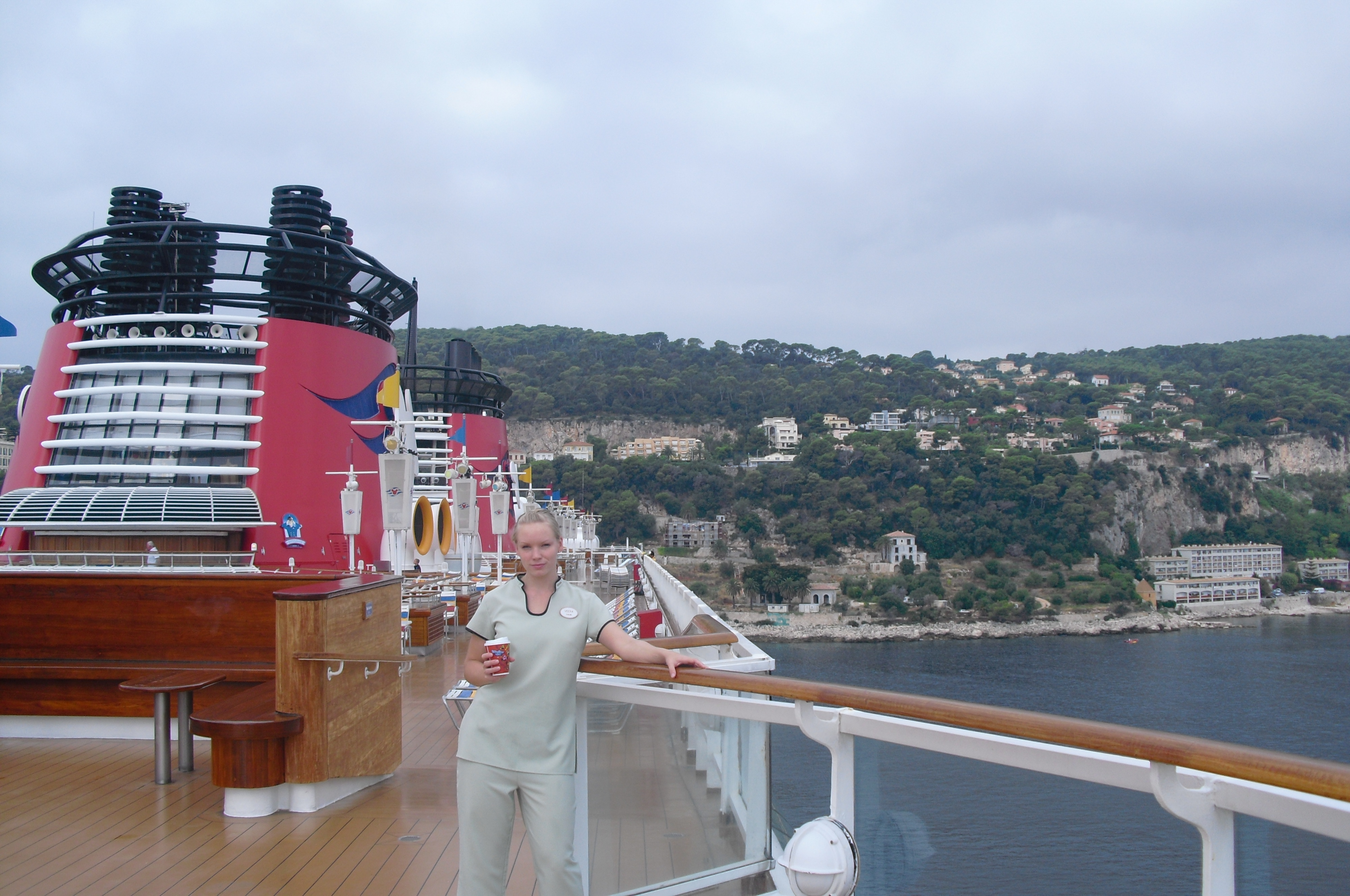
Välimeren satamat tulivat Veeralle tutuiksi.
Kahden Englannin viikon aikana hänestä leivottiin spa massage therapist. Veeralla oli ennestään urheiluhierojan pätevyys ja kaksi vuotta yritystoimintaa takana Helsingissä.
– Tein laivalla urheiluhierontaa sekä koulutuksissa oppimiani hoitoja, esimerkiksi kuumakivihierontaa, bambuhierontaa, sekä kuorivia ja puhdistavia merilevähoitoja niin yksilöille kuin myös pariskunnille toisen kollegan kanssa.
Vaikka työpäivät saattoivat venyä 13-tuntisiksi, Veera kokee olleensa erittäin etuoikeutettu asemansa vuoksi: kylpyläosaston työntekijät saivat vapaa-ajallaan käyskennellä laivan julkisissa tiloissa ohjelmista ja palveluista nauttien. Monen muun työntekijäryhmän oli tyytyminen erillisiin henkilökuntabaareihin, -ruokaloihin, -kirjastoihin ja –kuntosaleihin.
– Erikoislupaa hakemalla pääsimme myös syömään ravintoloihin. Saimme jopa käyttää ulkokannella olevia uima-altaita sekä poreammeita, leffateattereita unohtamatta. Saimme todellakin nauttia glamourista.
– Harvat vapaapäivät muistankin upeina minilomina, jotka olivat jokaisen raadetun työtunnin arvoisia, sillä tekemistä löytyi heti aamusta iltashow:hun asti, Veera hehkuttaa.
Loistoristeilijöihin liitetystä hohdokkuudesta pääsi omalla tavallaan osalliseksi myös helsinkiläinen Lotta Lindroos, joka vaihtoi kuutisen vuotta sitten Viking Linen tuottajan työnsä kuuden kuukauden ajaksi Celebrity Cruises –laivayhtiön assistant cruise managerin pestiin.

Lotta pääsi kokemaan loistoristeilijöiden eron verrattuna Viking Linen maailmaan.
Hänen aluksekseen valikoitui Celebrity Century, johon mahtuu yhteensä 2 657 matkustajaa ja henkilökunnan edustajaa.
– Kerkesin puolen vuoden aikana tehdä vuonot ja Skandinaaviset pääkaupungit, mutta pääosin tein Välimeren 10- ja 11-päivän risteilyitä. Ulos pääsi käymään esimiehen roolissa vaihtelevasti, mutta sanotaanko että 3-4 kertaa yhden risteilyn aikana.
– Viihdetiimissä kun työskentelee, saa pukeutua kolme kertaa risteilyssä iltapukuun ja minun työhöni kuului jopa juoda cocktailit näinä iltoina asiakkaiden kanssa.
Lempikohteekseen Lotta mainitsee Ranskan Villefrancen maukkaan ruoan ja kauniin sataman vuoksi. Maisemat olivat myös erityisen upeita saavuttaessa Maltalle sekä kierrellessä Norjan vuonoilla.
Lotan tehtävänä oli johtaa laivan toimintatiimiä, joka järjestää asiakkaille aktiviteetteja. Päivät venyivät pitkiksi risteilyohjelmia laatiessa ja tapahtumia vetäessä.
– Ohjasin välillä toimintaa aamukuudesta kahteen yöllä seitsemänä päivänä viikossa, sisältäen jokailtaisen teemaillan yömyöhään – eli pukeuduttua tuli 50-luvun hopsockmaisesti, villiin 70-lukuun ynnä muuta.
– Uutena kokemuksena tulivat jokapäiväiset TV-kuvaukset ja haastattelut, kun kuvasimme kohdeinfoa 24h vuorokaudessa toimivalle TV-kanavalle. Työ vaihteli esimiestyöstä tanssimiseen ja parhaimmillaan neljä kertaa päivässä bingon peluusta gaalojen juontamiseen. Rankkaa mutta niin opettavaista, Lotta tuumii.
Ei vapaapäiviä
Pääperiaatteena laivaelämässä on, että jokainen päivä on työpäivä ja sopimukset kestävät yleensä 4-8 kuukautta kerrallaan. Tämä kerrotaan hakijoille etukäteen, mutta ei aina niin suorasanaisesti.
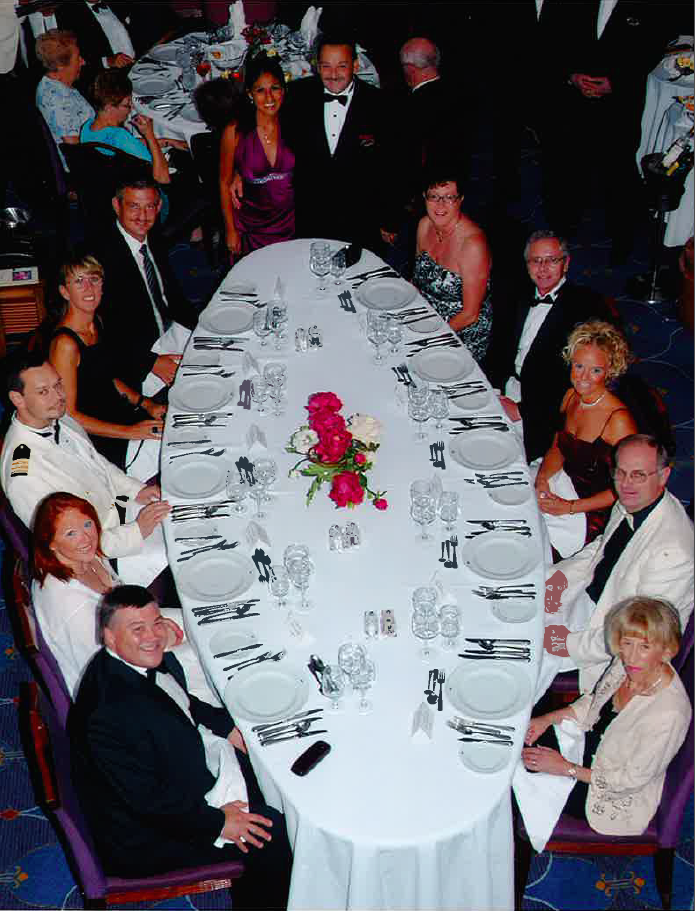
Lotta istuu kolmantena oikeasta alakulmasta laskien.
– Minulle annettiin hieman ruusuisempi kuva työajoista puhelimitse ja meilitse, kuin mitä totuus oli paikan päällä, Lotta kertoo.
Hän toteaakin loistoristeilijällä puurtamisen eroavan tutusta ruotsinlaivatyöstä etenkin työehtojen puolesta.
– Activity teamillani oli rullaava työaikataulu eli joka neljäs päivä osa päivästä oli vapaata, mutta itselläni esimiehenä sellaista ei ollut. Seitsemän päivää viikossa monta kuukautta putkeen oli rankempaa alkuun kuin osasi odottaa.
– Suomen työehtosopimusten mukaan sinulla on esimerkiksi esimiehenä 10 päivää töitä ja 10 päivää vapaata. Minulta kysyttiinkin todella usein hymyssä suin minkä ihmeen takia lähdin karibianristeilijöille, jos työsopimukseni oli Itämerellä näin hyvä, kertoo nykyisin taas Viking Linen listoilla toimiva Lotta.
Suomalaisen lainsäädännön paremmuuden huomasi myös espoolainen Leila Rönnlund tehdessään neljän kuukauden ajan töitä Royal Caribbean Cruise Linesilla vuonna 2010.
– Eiväthän nuo työehtosopimukset ole ollenkaan meidän suomalaisten luokkaa – että tehdään kuuden kuukauden sopimuksia ja olet joka ikinen päivä töissä ilman yhtään vapaapäiviä. Suomen lippu on paras lippu, hän hehkuttaa.
Leila painoi itse duunia Vision of the Seas –laivan vastaanotossa. Alukseen mahtuu 3 200 ihmistä.
– Loppuvaiheessa rupesin olemaan jo aika väsynyt.

Leilalla oli laivalla norjalainen kämppis. Hyttien jakaminen on tavanomaista.
-Jaoin yhden norjalaisen tytön kanssa hytin, jossa ei ollut ikkunaa. Kotiin tultuani ihmettelin herätessä että mikä on tuo kirkas valo. Kun avasin silmät, totesin että sehän on aurinko, hän kertoo.
Vaikka kokemus oli hänen mukaansa monella tapaa rikastuttava ja etenkin Norjan rannikko ja Välimeri tekivät vaikutuksen, Leila palasi mielellään Suomen risteilymaailmaan. Nykyisin hän on Finnlinesin palveluksessa.
Lotta suosittelee loistoristeilijöille hakemista ihmisille jotka janoavat uusia kokemuksia, eivät karta kovaa työntekoa ja ovat luonteeltaan sosiaalisia.
– Näin jälkiviisaana neuvoisin ottamaan mieluummin normaalin työntekijän paikan ensimmäisenä – ulkopuolisena esimiehenä oli haasteellista oppia tuntemaan organisaatio, joka oli paljon hierarkkisempi kuin meilläpäin. Aikaa opettelemiseen ei pahemmin jäänyt, eli kantapään kautta tuli opittua monia asioita.
Leilalle suurin yllätys oli amerikkalainen konservatiivisuus ja siitä kummunneet tiukat käyttäytymissäännöt merellä.
– Vaikka olen koko ikäni tehnyt asiakaspalvelussa töitä, niin amerikkalaiset ovat kaikista vaativimpia: small talkia, sir-mam –nimellä puhuttelua, keinotekoista hymyilyä. Jouduin myöskin värjäämään punaiset hiukseni, koska britti-esimies totesi että punainen on liian räikeä hiusväri, vaikka olin lähettänyt kuvan itsestäni etukäteen, Leila kertoo.
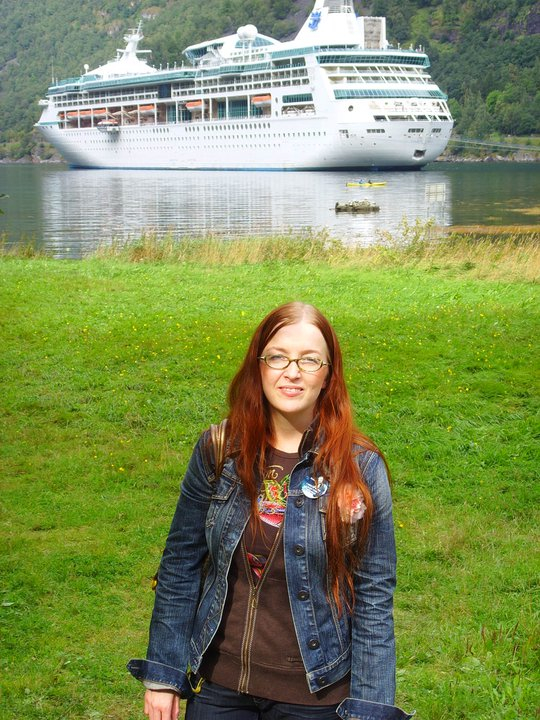
Leilan punaista hiusväriä ei katseltu hyvällä.
Rankinta työtä ravintolassa
Risteilylaivojen fyysisesti rankimpiin pesteihin kuuluu ravintolatyöskentely. Silti tällekin alalle on muutama seikkailunnälkäinen suomalainen eksynyt, kuten vantaalainen Lauri Ahonen.
Hän päätyi Disney Wonderille kuuden kuukauden ajaksi hommiin vuonna 2010 nähtyään Disney Cruise Line -firman ilmoituksen työvoimatoimiston sivuilla.
– Vaikka etukäteen tiesin työmäärän olevan kova, niin kyllä se työn raskaus pääsi silti yllättämään, kertoo Lauri.
– Töitä tehdään 80-90 tuntia viikossa. Peruspäivän aikataulu on seuraava: 7.30-10.30 aamiaisvuoro, 11.30-14.30 lounasvuoro ja klo 17-23 illallisvuoro.
-Ainut mahdollisuus sosiaaliseen elämään on käytännössä illalla töiden jälkeen, joten yöunet jäävät helposti lyhyiksi. Lounaan ja illallisen välillä on pakko nukkua päiväunet.
Samaa selittää nyt jo kuusi vuotta Celebrity Cruises –firman palkkalistoilla ollut lahtelainen Saara Jäntti. Hän aloitti vuonna 2012 työt 4 120 ihmistä vetävän Celebrity Eclipse –laivan ravintolassa ja on sen jälkeen tehnyt useita jopa 8 kuukauden pituisia sopimuksia Celebrity-firman eri laivoilla.
– Elämäntyyli laivassa on tosi erilainen. Yössä ei tule nukuttua yli neljää tuntia, sillä illalla ja yöllä on kaikki sosiaalinen elämä, Saara kertoo.
Hänen laskujensa mukaan unta tulee saatua palloon noin 6-7 tuntia per vuorokausi, mutta pienissä pätkissä.
-Kuulostaa hurjalta, hän pohtii.
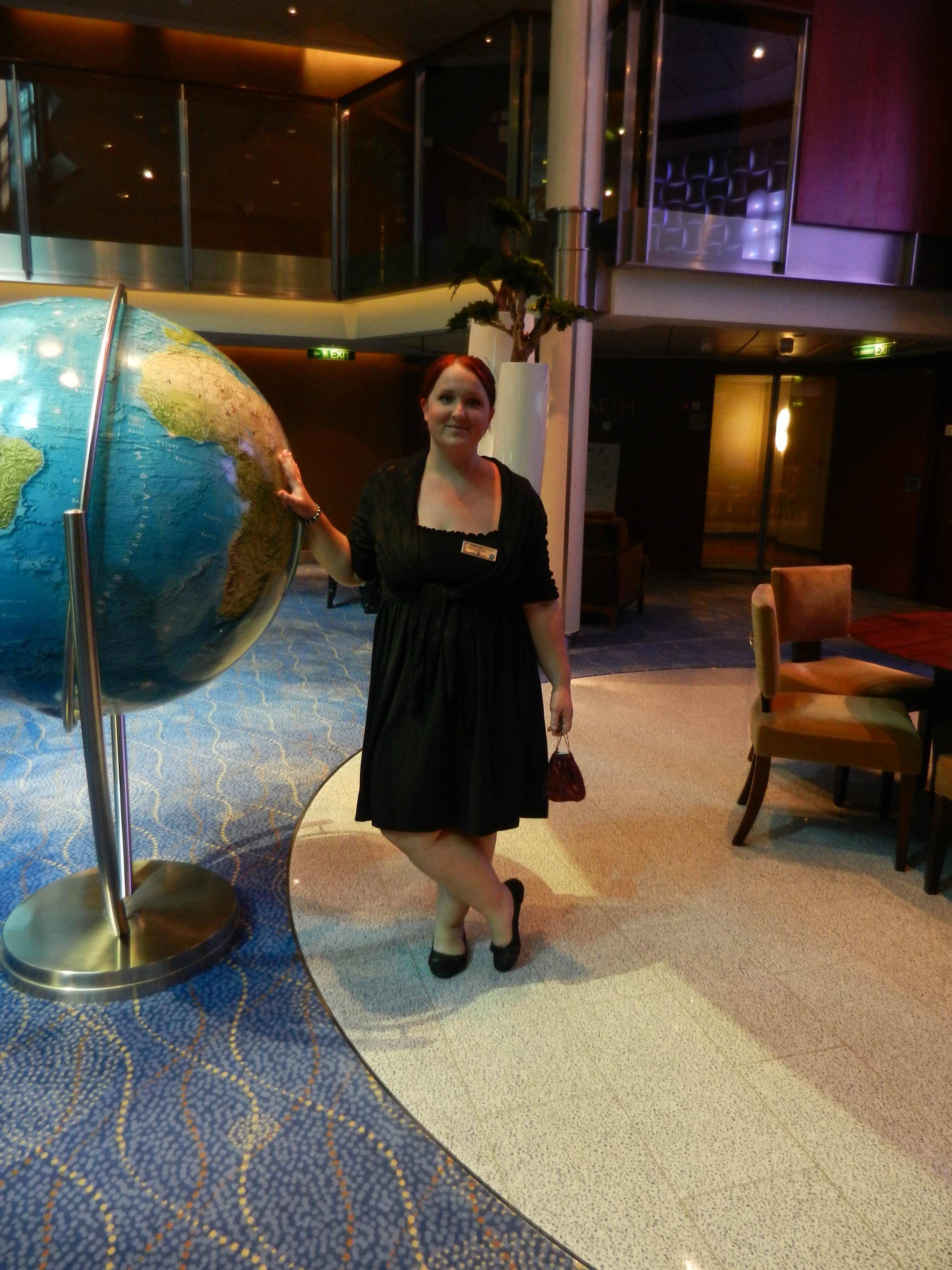
Saara tietää, että “Ship life” eli laivaelämä imaisee helposti mukaansa.
Oman lisähaasteensa tuo jatkuva liikkeessä olo: Saara laihtui ensimmäisen puolen vuoden aikana 25 kiloa joutuessaan olemaan koko ajan jaloillaan hostessin työssään.
– Alku oli tosi rankkaa. Sattui joka paikkaan. Olin varautunut pahimpaan, mutta totuus oli suurin piirtein yhtä paha tai pahempi, hän nauraa.
Laurille taas oltiin työhaastatteluvaiheessa lupailtu, että hän pääsisi aiemman kokemuksensa perusteella laivan fine dining -ravintolaan töihin. Perillä kuitenkin selvisi, että kaikki aloittavat apulaistarjoilijoina perusravintolassa, eikä ensimmäisen sopimuskauden aikana ole mahdollista edetä.
Karibianristeilijöillä töitä paiskineet suomalaiset myöntävät, että väsymys on yleinen seuralainen laivalla. Toki nukkumatin valtakunnassa voi halutessaan viettää koko ilta- ja aamuvuorojen välisen taukonsa, mutta se tapahtuu sitten sosiaalisen elämän kustannuksella: Saara kertoo Celebrityn laivoilla olevan joka ilta kahdet crew-bileet, karaokea ja toisinaan erityisjuhlat asiakastiloissa.
-Jotkut hippaavat huolella, itselläni ei kestä kunto, hän nauraa.
Henkilökuntabileet ovat aikamoinen kokemus villin menonsa vuoksi.
-Naisena kun menee laivalle töihin, niin vientiä olisi kyllä. Minua ei ole ikinä elämäni aikana pyydetty niin paljoa treffeille.
Toisaalta tiiviissä työyhteisössä juorutkin leviävät nopeaan, joten Saaran mielestä on parempi vetää varovaista linjaa.
– Kulttuuri on niin erilainen laivalla, että välillä tulee sellaisia ”hitto, mä hyppään tuolta kannelta” –kohtauksia. Välillä on niin väsynyt olo ja koti-ikävä vaivaa, hän harmittelee.
Toisaalta mahtaviakin hetkiä on mahtunut viimeiseen viiteen vuoteen useita.
-Karibialla paras muisto on St. Maartenista, jossa oli hyvä fiilis ja kuljimme vesitaksilla ympäriinsä. Menin rannalle ja luin kirjaa, ja ajattelin ”ehkä tämä on ihan hyvä juttu”, hän hymyilee.
Työkavereita ympäri maailmaa
Laurin mukaan positiivisinta laivaelämässä oli kansainvälinen työilmapiiri. Kiireestä ja pitkistä päivistä huolimatta tunnelma oli aina todella mukava, eivätkä kulttuurikonfliktit vaivanneet.

Lauri tutustui laivalla ihmisiin eri puolilta maailmaa.
– Työkavereita oli ympäri maailmaa, meidän laivalla muistaakseni 40 eri maasta. Lähimmät ystäväni olivat Kanadasta, Britanniasta, Espanjasta, Ranskasta, Ruotsista ja Perusta sekä Chilestä.
– Euroopasta oli nuorempia työntekijöitä, jotka olivat mukana “haluan nähdä maailmaa” fiiliksellä, kuten minäkin. Intialaiset, aasialaiset ja eteläamerikkalaiset olivat laivalla oikeasti tienaamassa rahaa perheelleen ja säästivät joka dollarin.
Lotta muistelee Celebrity Centurylla olleen lähemmäs sata eri kansallisuuksien edustajaa.
– Paljon aasialaisia, karibialaisia, kanadalaisia. Omassa tiimissäni oli edustettuna USA, Kanada, Jamaika, Trinidad & Tobago, ja Suomi tietysti. Olin tosin ainoa suomalainen tällä laivalla.
Veera kertoo myös olleensa useimmiten ainoa suomalainen tiimissään, mutta se oli vain positiivinen asia.
– Sanoisin, että laivalla työskenteli ihmisiä kaikkialta muualta, paitsi täältä meidän pohjoisesta. Kaikista eniten oli amerikkalaisia, filippiiniläisiä, brittejä, eteläafrikkalaisia sekä kiinalaisia.
– Se olikin ihmisille iloinen yllätys, kun laivaan astui vaaleahiuksinen tyttö Suomesta. Oli niin monia jotka eivät edes tienneet missä Suomi sijaitsee. Oli ihanaa oppia tuntemaan uusia ihmisiä uusista maailmanosista, hän miettii.
Veera kertoo kuulleensa yllättävistäkin ihmiskohtaloista, kuten tuoreista vanhemmista jotka olivat yhdeksän kuukauden sopimuksella töissä elättääkseen sukua kotona.
– Huomasin, että monelle laivalla työskentely ei ole halukysymys, vain ainoastaan tie saada joskus kunnon elämä kotimaassaan.
– Nämä ihmiset ja ihmistarinat avasivat silmäni niin hyvässä kuin huonossakin. Ja se positiivisuus: ihmiset olivat niin iloisia ja positiivisia, että se tarttui väkisinkin!
Myös Laurille jäi laiva-ajasta pääasiallisesti hyviä muistoja.
– Lämpimimmin muistelen aurinkoisia päiviä, joita vietimme ystävien kanssa satamaa lähellä olevan hotellin allasalueella Cabo San Lucasissa. Ja kaikki muu mitä pääsi ihanien ihmisten kanssa tekemään, hän kertoo.
Saaran mukaan uvuttavuudestaan huolimatta laivaelämä imaisee helposti mukaansa.

Työkavereiden kanssa vietetään myös vapaa-aikaa laivalla. Saara on kolmas vasemmalta ylhäältä.
Laivalla ruokatarjoilu pelaa, pyykit pestään puolestasi ja ystävät löytyvät saman laivan katon alta. Koko ajan näkee uusia satamia ja välillä pääsee kattoterassille nauttimaan upeasta auringonlaskusta. Rahaa jää hyvin säästöön, kun elinkuluja ei ole ollenkaan.
-Tosi paljon ihmiset huijaavat itseään, että tämä on viimeinen sopimus, Saara myhäilee.
Haluatko loistoristeilijälle töihin?
Floridan Miamissa asuva turkulainen Maria Mattson vastaa Royal Caribbean Cruise Lines –laivayhtiön “Guest Services” –osastosta. Hänen tehtävänään on haastatella laivan eri osastoille töihin hakevia ihmisiä, etenkin jos he ovat hakemassa esimies- tai asiakaspalvelutehtäviin. Maria vastaa tässä muutamaan yleisimpään hakijoita askarruttavaan kysymykseen.
Miten Royal Caribbean Cruise Linesille voi hakea töihin?
– Nettisivumme Royalcareersatsea.com on paras paikka. Netin kautta voi lähettää meille CV:n, ja otamme sitten yhteyttä. Haastattelut tehdään puhelimitse tai Skypellä. Jos ei kuule heti meistä, ei kannata ajatella ettei saanut työtä: vastausaika on yleensä 2 viikkoa – 2 kk. Minuunkin voi ottaa suoraan yhteyttä jos on kysyttävää (MMattsson@rccl.com).
Onko laivalle vaikea päästä töihin?
– Ei ole mitenkään hirveän hankalaa. Ihmisiä ylennetään koko ajan ja vaihtuvuus on suurta. Haluaisinkin enemmän suomalaisia töihin, varsinkin niitä jotka puhuvat myös ruotsia tai esim. saksaa tai espanjaa englannin lisäksi. Suomesta on myyty enemmän risteilypakettilomia ja muutenkin nykyisin on enemmän skandinaavivieraita.

Mitä viisumeita laivalle töihin tuleva tarvitsee?
– Suomalainen ei tarvitse Schengen-viisumia vaan pelkän C1/D-merimiesviisumin USA:han, sillä useimmat laivat tulevat jossain vaiheessa Amerikkaan. Sen saa mistä tahansa Amerikan suurlähetystöstä kunhan on esittää Letter of Employment (LOE) –kirje meiltä, joka todistaa että sinut on hyväksytty laivalle töihin.
Mitkä kulut laivalle lähtijän pitää kustantaa itse?
– Haastattelun jälkeen pitää käydä lääkärintarkastuksessa, joka on vähän vaativampi kuin perinteinen merimieslääkärintarkastus. Suomessa on tietyt lääkärit, jotka hyväksymme. Viisumikulut ja lentokulut laivan lähtöpaikkaan tulee myös kattaa itse, oli kyseessä sitten Ruotsi taikka Australia. Paluulennon maksaja riippuu siitä mille osastolle päätyy. Ravintola- tai hyttihenkilökunta maksaa aina lennot itse. Guest Services –osastolla laiva maksaa lennot ensimmäisen menolennon jälkeen.
Minkälaista palkkaa laivalla saa?
– Esimerkiksi asiakaspalvelutiskillä palkka alkaa noin 1 700 dollarista per kuukausi, joka kuulostaa pieneltä mutta ylenemismahdollisuuksia on monia. Toisaalta laivalla ei ole mitään juoksevia kuluja, kun hytti ja ruokailut kuuluvat ilmaisetuihin. Hyttiemännillä peruspalkka on alhaisempi, mutta he saavat asiakkailta tippejä. Muissa asemissa palkka on isompi, mutta siihen ei yleensä tule päälle tippejä.
Miten verotusasiat hoituvat laivalla?
-Laivayhtiö ei pidätä tuloista veroja, ellei ole USA:n kansalainen. Laivamme ovat mm. Bahaman ja Liberian lipun alla. Jos on Suomen kansalainen ja maasta pois yli 6 kuukauden ajan, Suomi ei myöskään pidätä veroa.
Minkälaisilla sopimuksilla töitä tehdään?
– Hyttiemännät ovat töissä 6 kk putkeen, sitten 6 viikkoa palkattomalla lomalla. Ravintoloissa tehdään 6-8 kk töitä, sitten ollaan 8 viikkoa palkattomalla lomalla. Esimiestehtävissä ollaan 4 kk töissä ja sitten 2 kk lomalla, jolta ajalta saa myös palkkaa. Esimiestehtävissä pysytäänkin yleensä kauan kun niihin kerran päästään.
Onko sopimuksen aikana vapaapäiviä?
-Ei ole vapaapäiviä, mutta töissä ollaan esimerkiksi klo 8-12, sitten on 5 tuntia vapaata, ja sitten tehdään vielä iltavuoro klo 17-21. Satamissa on aikaa mennä ulos.
Minkä ikäisiä ihmisiä karibianristeilijöillä on töissä?
-Se vaihtelee paljon, 21-vuotiaasta ylöspäin. Guest Services Managerit ovat noin 27-46-vuotiaita. Jotkut hyttiemännät ovat olleet tosi kauan meillä töissä, 20-25-vuotta.
Teksti: Mirva Lempiäinen
Kuvat: Mirva Lempiäinen ja haastateltavien kotialbumit
Lisätietoa laivatyöskentelystä:
allcruisejobs.com
cruiseserver.net
onespaworld.com
Blogi- ja mediakirjoituksia laivatyöskentelystä:
http://zerototravel.com/paid-to-travel/how-to-get-a-job-on-a-cruise-ship
www.helsinginuutiset.fi/artikkeli/373457-14-tunnin-paivia-ja-huulipunapakko-tallaista-on-tyo-karibian-loistoristeilijalla
E-kirjoja aiheesta:
How to Get a Job On Board Cruise Ships (Derek Baron ja Liz Aceves)
Get a Cruise Ship Job (Neil Maxwell Keys)
